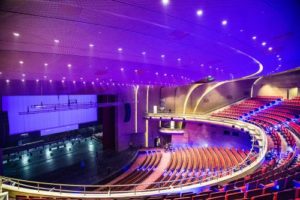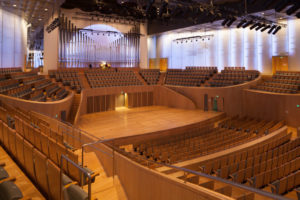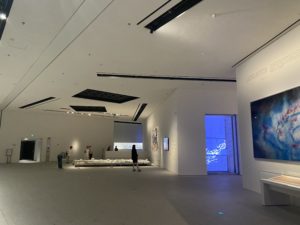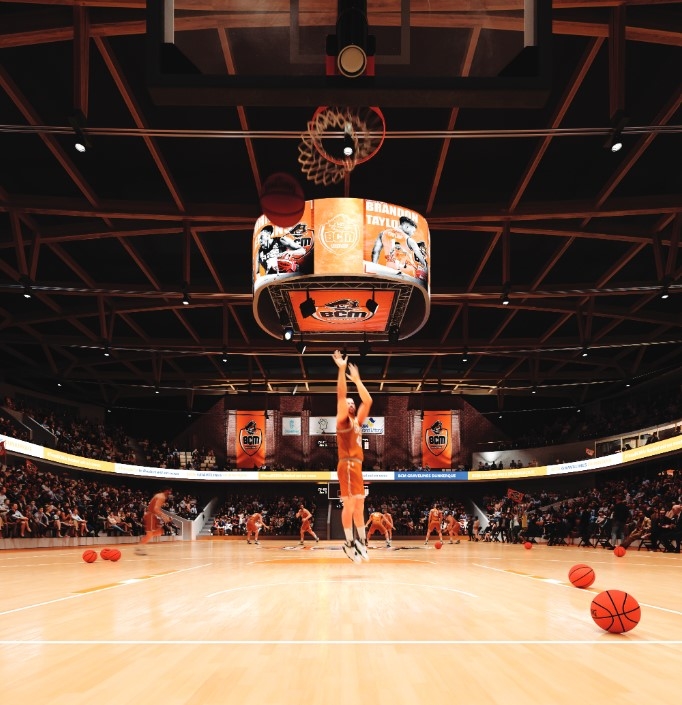dUCKS scéno in China: a success story

China experienced an architectural boom in the early 2000s, a period marked by the multiplication of exceptional cultural projects. A dynamic regional context in which dUCKS scéno has accompanied architects on this new playground, leading to the opening of a branch in Shanghai. Isabelle Serré, Project Coordinator and Head of the Chinese agency, tells us about this adventure in the Middle Kingdom, through some of the grandiose projects completed there.

dUCKS scéno and China: the story of a fruitful collaboration
“Twenty years ago, all the emerging countries, including China, opened up to major cultural projects with international architects to change their image,” explains Isabelle, project coordinator at dUCKS scéno. “Opening up through cultural projects is a fairly well-known system, as if to say: ‘we’ve moved on to something else’, as has been the case in the United Arab Emirates and Saudi Arabia, for example.” (https://ducks.fr/le-moyen-orient-nouvel-eldorado-pour-les-acteurs-de-la-culture/ )
Historically, from the 2000s onwards, China embarked on an incredible construction drive, with hundreds of projects and inviting legendary architects. “It was these same architects who invited us to collaborate on their projects. That’s how it all started,” says Isabelle. The sudden openness of this country to contemporary architecture convinced dUCKS scéno to explore this market and to see the potential that lay there.
The Chinese adventure thus began in 2002 with dUCKS scéno’s participation in the TV Culture Centre (TVCC) project with OMA (https://ducks.fr/projet/tvcc/), then accelerated in 2014 with the Movie Grand Théatre (https://ducks.fr/projet/oriental-movie-metropolis-grand-theatre/) in Qingdao, which marked dUCKS scéno’s first collaboration with the local design office China IPPR international Engineering Co.
Isabelle then talks about the creation of a WFOE (Wholly Foreign Owned Enterprise) in 2016 in Shanghai, i.e. a company established in China but whose owners are foreign and whose capital is brought in by foreign investors. “The aim of this approach was to understand the real needs in China. So we went there to analyse what was happening in terms of architecture”, she shares. This immersion, lasting a few days a month, enabled us to take stock of the situation, understand what was expected, explore local profiles and identify architects to approach. “We quickly realised that there was no awareness of the importance of scenography in the projects, as the directive was to build. But some architects were questioning our approach to scenography, so we decided to create proximity via a local relay.”
So the company started looking for local talent. “Until then, we had been working with international architects, but we had identified some great local profiles. We then looked for offices, trained the Chinese team and taught our local staff about scenography, as well as regional architecture agencies, subsidiaries of international agencies, universities and LDIs (Leader Design Institutes).
The presence of dUCKS scéno has evolved over the years. Isabelle explains: “My local presence was around 10 days a month, the aim being to have local contacts, so we recruited 6 people in Shanghai, with the eventual idea of turning it into a fairly autonomous subsidiary.” In the end, this quest for autonomy turned out to be more complex than expected, and after 5 years of going back and forth, since 2021 the agency in China has been concentrating more on sales development and site supervision.

A region full of challenges
dUCKS scéno’s mission in China has been marked by some unique challenges. Isabelle stresses that the collaborations were initially on large projects, but that it was important for dUCKS to share its experience on the need to develop modest-sized venues, allowing proximity, and the pedagogy that must accompany Culture and all artistic and cultural forms, “We must be able to allow local artists to get their teeth into smaller venues. If artists are one day to be able to take over the small venues and then the large ones, we also need the educational venues, the media libraries, the campuses, the schools…”. The challenge here was to make people understand that scenographers are needed for these buildings, which are certainly not performance venues, but places where artistic legitimacy can be instilled.
Proximity and trust have been key elements in this adventure, the challenge being to convince the local contacts with this foreigner’s hat on, as humbly as possible. “That required a lot of discussion and trust, to show our contacts that although we were touching on “sensitive” issues such as the size and shape of the auditorium or the layout of the seats, it was not our vocation to take the place of the architect”.
Emblematic projects
Among the most emblematic projects is the one through which dUCKS scéno arrived in China, namely the Centre for Television Culture (CCTV) in Beijing (https://ducks.fr/projet/tvcc/ ) in collaboration with the Dutch agency OMA. The building houses a hotel and a 1,500-seat multifunctional auditorium dedicated to TV filming. The stage design mission was to develop the programme, consult on the design of the auditorium, stage areas and associated spaces, design the motorized platform systems to provide a variable-configuration auditorium, provide complete project management for the stage design and equipment handling, stage lighting and audiovisual equipment, and supervise the works.
The Shandong Grand Theater in Jinan (https://ducks.fr/projet/shandong-grand-theater/), inaugurated in 2013, is another of Paul Andreu’s landmark projects, comprising a cultural centre housing a 1,600-seat opera house, a 1,500-seat concert hall and a 500-seat multi-purpose theatre. The cultural centre also includes a library, museum and restaurants. At the time, dUCKS scéno was involved in the design of the opera house, the stage areas and ancillary spaces, the study of visibility and accessibility, and the organisation of traffic flows. The agency is also responsible for the complete project management of the scenographic equipment, stage lighting and audiovisual equipment.
Finally, another major project that deserves to be highlighted is the Pudong Art Museum (https://ducks.fr/projet/pudong-art-museum/ ) , an emblematic museum of modern art designed by Ateliers Jean Nouvel. Built on the banks of the Huangpu River, it includes galleries for temporary exhibitions, an auditorium, a café, a restaurant, shops, a leisure and conference area, etc. dUCKS scéno was involved in the design and creation of the exhibition and stage areas, project management for the scenographic equipment and the study of the various systems.
“We currently have many projects underway. To give a few figures on China, since 2016 we have taken part in around thirty competitions, completed around ten projects and currently we have 6 projects in progress. We have a lot of partners, talented architects with whom we really enjoy working and who are incredibly talented, this is particularly the case with de Open Architecture et reMIX Studio.”


In the wake of the cultural effervescence that marked China in the early 2000s, dUCKS scéno deployed its expertise in scenography and was able to respond to the country’s emerging needs in terms of architecture. As well as creating grandiose projects, the agency has forged bonds of trust and risen to the unique challenges of this region.




